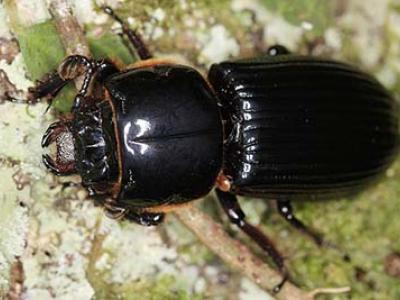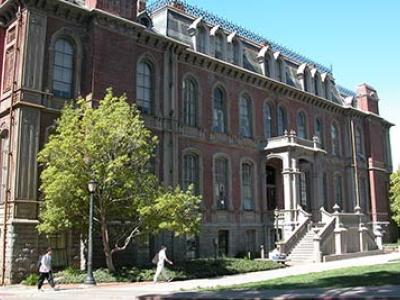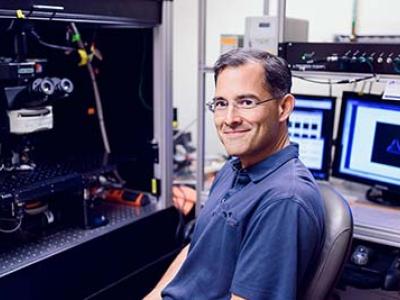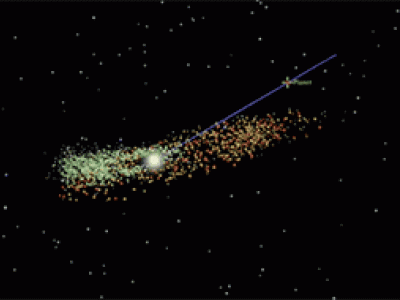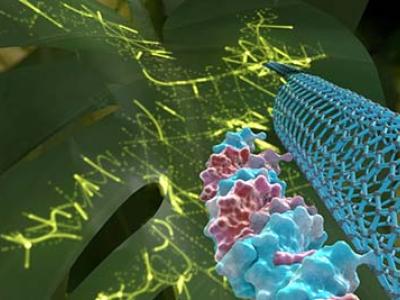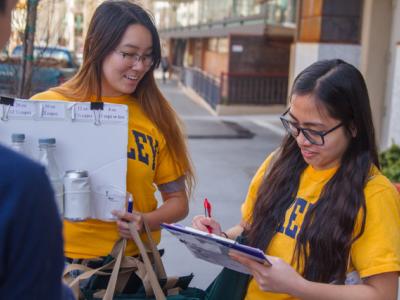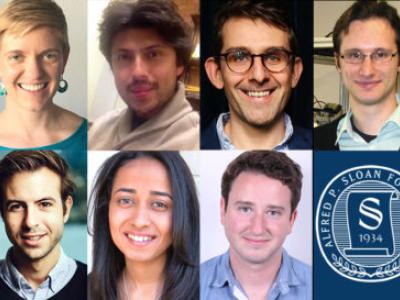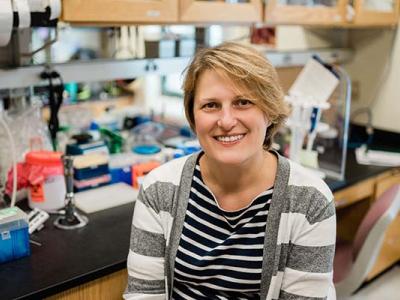In a new study, researchers at UC Berkeley and Berkeley Lab describe how the architecture of the long-horned passalid beetle's gut — and the beneficial microbes that inhabit it — help the beetle carry out an amazing transformation. This knowledge could help scientists engineer more efficient systems for producing bioproducts in the lab.
Research News
Learn more about UC Berkeley's researchers and innovators.
Showing 1617 - 1632 of 3464 Results
In an exclusive New York Times story today, Berkeley and 20 other universities announced they are forming a new consortium, the Public Interest Technology University Network (PIT-UN), to support not only the development of new technologies, but also to exploring what policies and safeguards must be put into place to ensure that they will work for the benefit of society.
Physicists have used a seven-qubit quantum computer to simulate the scrambling of information inside a black hole, heralding a future in which entangled quantum bits might be used to probe the mysterious interiors of these bizarre objects.
With support from the Bakar Fellows Program, David Schaffer is working on one of the first gene therapies to be approved for clinical use. The therapy acts to restore vision in children with a rare and previously incurable disease called Leber's congenital amaurosis type 2.
Some of the peculiar aspects of our solar system — an enveloping cloud of comets, dwarf planets in weird orbits and, if it truly exists, a possible Planet Nine far from the sun — have been linked to the close approach of another star in our system’s infancy that flung things helter-skelter.
UC Berkeley synthetic biologists have engineered brewer’s yeast to produce marijuana’s main ingredients—mind-altering THC and non-psychoactive CBD—as well as novel cannabinoids not found in the plant itself.
A new study from UC Berkeley challenges decades of research positing that emotional intelligence and recognition are based largely on the ability to read micro-expressions signaling happiness, sadness, anger, fear, surprise, disgust, contempt and other positive and negative moods and sentiments.
Inserting or tweaking genes in plants is more art than science, but with a new technique developed by University of California, Berkeley, scientists could make genetically engineering any type of plant—in particular, gene editing with CRISPR-Cas9—simple and quick.
It’s still some years off, but Steven Conolly aims to see disease in a totally new way. He leads research on an emerging Magnetic Particle Imaging (MPI) technology that already can peer past tissue or organs to detect disease deep within the body.
Based on new data published today in the journal Science, it seems increasingly likely that an asteroid or comet impact 66 million years ago reignited massive volcanic eruptions in India, half a world away from the impact site in the Caribbean Sea.
Consumption of sugary drinks in Berkeley’s diverse and low-income neighborhoods dropped precipitously in 2015, just months after the city levied the nation’s first soda tax on sugar-sweetened beverages.
Astronomers now think that Neptune’s tiniest moon, Hippocamp, was chipped off a larger moon, Proteus, by a cosmic collision billions of years ago.
Seven assistant professors from the fields of astronomy, biology, computer science, economics and statistics have been named 2019 Sloan Research Fellows. They are among 126 scholars from the United States and Canada whose early-career achievements mark them as being among today’s very best scientific minds. Winners receive $70,000 over the course of two years toward a research project.
Climate change is fueling coral bleaching throughout the tropics, with potentially devastating consequences on coral reef ecosystems and on the people who depend on them for seafood, tourism and shoreline protection.
New simulations led by researchers working at the Department of Energy’s Lawrence Berkeley National Laboratory (Berkeley Lab) and UC Berkeley combine decades-old theories to provide new insight about the driving mechanisms in the plasma jets that allow them to steal energy from black holes’ powerful gravitational fields and propel it far from their gaping mouths.
Nearly 40 percent of women worldwide stop using birth control pills within a year – mainly due to side effects such as depression, weight gain, bleeding between periods and blood clots. Research by Polina Lishko on a non-hormonal contraceptive is showing promise as a new birth control alternative.

